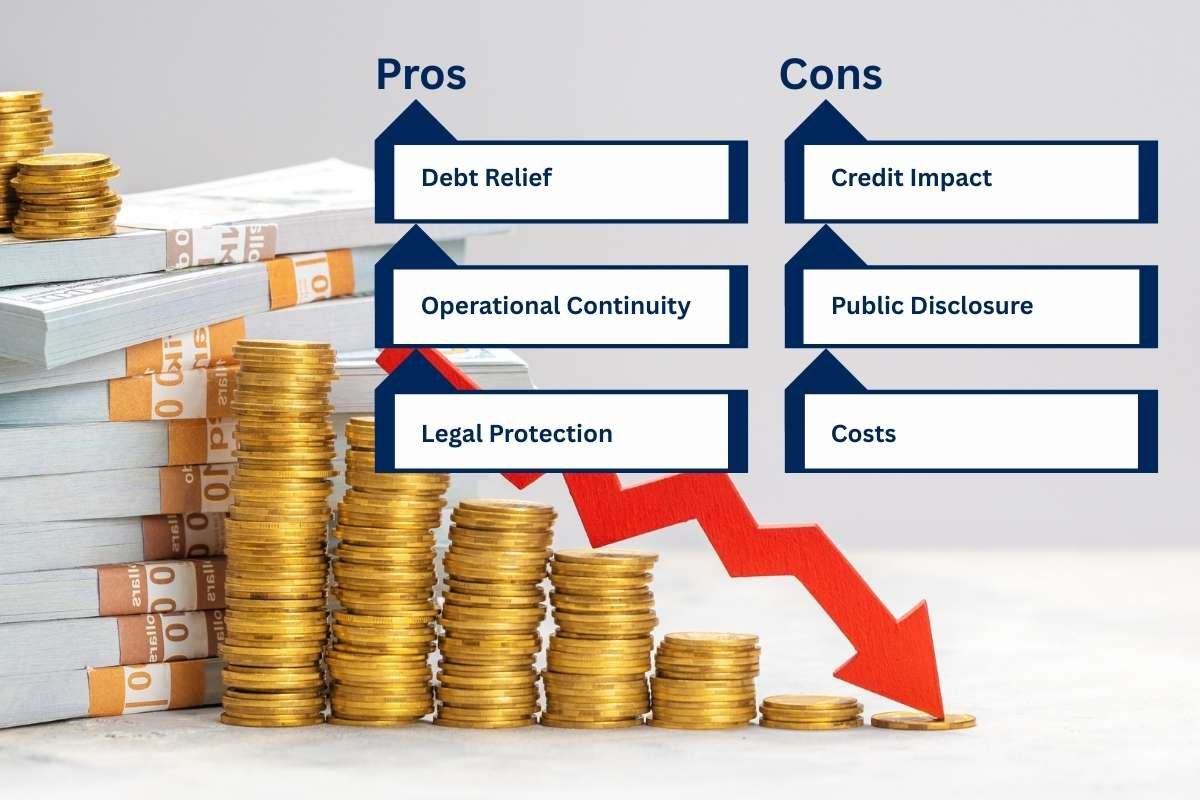Business Bankruptcy Explained: Process, Types & Legal Impact on Companies
Business Bankruptcy Explained: Process, Types & Legal Impact on Companies
Blog Article

Source: Image By D-Keine from Getty Images Signature
Running a business is like a high-risk mission these days. It’s not always going to be a smooth run for them. There surely will be times of financial downtimes, and if there isn’t the right strategy, everything goes down the drain. Thousands of businesses get shut down yearly, not because they lack ideas or ambition, but because they can no longer manage their financial burdens. Debts or rising costs may snatch everything from local retail shops and emerging startups to well-established businesses.
In such cases, Business Bankruptcy becomes a possible aftermath. While the word bankruptcy often sparks fear, it’s more nuanced than simply shutting down. It’s a legal tool; for many, it becomes a necessary strategy to either reorganize operations or close down responsibly. Sustaining such phases in the right way catapults them out of it. This blog will discuss the concept of bankruptcy, its process, and how it can be used as a legal defense.
How Bankruptcy Works?

From here, the court will evaluate the business’s financial condition. Depending on the type of bankruptcy filed, the company will either work out a plan to pay back its debts over time or sell off its assets to cover what it can. Each path carries different outcomes, but all are designed to ensure the process is fair, transparent, and legally binding.
Types of Business Bankruptcy
There isn’t just one kind of business bankruptcy. In the U.S., companies typically file under Chapter 7 or Chapter 11 of the Bankruptcy Code.
1. Chapter 7
7 is liquidation-based. Businesses usually choose this case if they have no realistic path to recovery. During this case, operations will be stopped, assets will be sold, and the proceeds will be distributed among creditors. Once the process is complete, the business effectively ceases to exist.
2. Chapter 11
11 is designed for reorganization. It allows a business to continue operating while restructuring its finances under court supervision. This could involve renegotiating contracts, downsizing, or selling off unprofitable parts of the company. Corporations or larger firms commonly use it, though small businesses can file under Chapter 11 if reorganization seems viable.
For sole proprietors or small businesses with consistent income, Chapter 13 may be considered. It works similarly to Chapter 11 but is often more suitable for individuals because it allows debt repayment over time without liquidating all assets.
Reasons for Bankruptcy

- Many factors contribute to the cause of the business bankruptcy. Recent economic downsides, like recessions or declines in performance, can reduce demand and revenue. Poor financial management is another frequent culprit, especially when expenses consistently outweigh income or debt is taken on without a repayment plan.
- Legal troubles, such as lawsuits or regulatory fines, can create unexpected liabilities. Internal issues like fraud, mismanagement, or even losing a significant client or investor push a business into bankruptcy. Supplier disruptions can cause a substantial financial strain, especially for companies operating on tight margins.
- The causes might stem from various factors leading to a downfall. The common aftermath is that money gets tight, debts pile up, and businesses have difficulty paying their bills. Bankruptcy is a viable option when things go down.
Also Read: Business Collaboration 101: Joint Ventures vs Partnerships
The Bankruptcy Process
- Filing for business bankruptcy isn’t as simple as signing a form and walking away. It’s a detailed legal process that starts with compiling complete financial records. This includes assets, liabilities, income statements, and creditors.
- Once the paperwork is filed, the court imposes an automatic stay, halting all collection efforts and allowing the company to regroup. A trustee may be appointed to oversee the case, particularly in Chapter 7, which involves liquidation.
- In Chapter 11 cases, the business proposes a reorganization plan that outlines how it will repay creditors while continuing operations. Creditors can weigh in, and the court must approve the plan. If successful, the business moves forward under new terms. If not, it may be converted into a Chapter 7 case and liquidated. The process can be lengthy and expensive, but it’s structured to ensure fairness and transparency for all parties involved.
Also Read: Mastering Business Finance Planning: A Strategic Roadmap to Financial Success
How Bankruptcy Affects Investors?
For investors, business bankruptcy often spells trouble. In a liquidation scenario, the pecking order determines who gets paid first, and unfortunately, equity investors are at the bottom of that list. Secured creditors, like banks with collateral, are prioritized. Next comes unsecured creditors, and only after those debts are addressed do shareholders see any return, if at all.
In Chapter 11 cases, investors may have a better chance of retaining some value, especially if the business successfully reorganizes and returns to profitability. However, shares may be diluted, or the company’s structure may change significantly. For this reason, bankruptcy is generally seen as a high-risk scenario from an investment perspective.
Pros and Cons of Bankruptcy

Pros:
- Debt Relief: Bankruptcy can discharge or restructure overwhelming debts.
- Operational Continuity: Chapter 11 allows businesses to continue operations during reorganization.
- Legal Protection: The automatic stay provides immediate relief from creditors’ actions.
Cons:
- Credit Impact: Bankruptcy filings remain on credit reports for years, affecting future borrowing.
- Public Disclosure: Financial details become part of the public record.
- Costs: Legal and administrative expenses can be substantial.
Impacts on Business Operations
How a bankruptcy filing affects daily business operations depends largely on the chapter used. In a Chapter 7 filing, operations usually stop almost immediately, and employees are laid off as assets are sold to pay debts.
In contrast, Chapter 11 allows the business to keep running. However, this isn’t business as usual. Management often must seek court approval for significant decisions, from new contracts to spending plans. Companies try to find a balance by maintaining normal operations and customer relationships while undergoing a deeply disruptive legal process.
Still, many companies have successfully emerged from bankruptcy stronger and more focused. With the right plan and support, business bankruptcy can be a viable option to recoup rather than calling it an end.
Also Read: The Crucial ERP System Examples: Transforming Business Operations
Conclusion
Business bankruptcy is the final legal term a company might hear. It seems like, in the end, bankruptcy offers two pathways–a closing call or a second chance in the marketplace. Either way, it is crucial to understand what the process involves, what your options are, and how it will affect your business and stakeholders.
It’s not a step to take lightly. But when used wisely, bankruptcy can be a tool for clarity, structure, and recovery. If you’re approaching that point, don’t go it alone. Consult with professionals, weigh your options, and take decisive action. The future of your business may depend on it.
FAQs
1. Can I file for bankruptcy and keep my business?
Yes, particularly under Chapter 11 or Chapter 13. These options allow operations to continue during restructuring.
2. What disqualifies liability for LLC debt?
LLC members are usually protected from liability unless they’ve provided personal guarantees or engaged in misconduct.
3. Is Chapter 13 better than Chapter 7?
It depends. Chapter 13 allows repayment over time and may save assets, while Chapter 7 is quicker but more final.
4. Who typically gets paid first when a company declares bankruptcy?
Secured creditors are first in line, followed by unsecured creditors. Investors and shareholders are typically last.
5. What are the options for bankruptcy for an LLC?
An LLC can file for Chapter 7 to liquidate or Chapter 11 to restructure and keep operating.
Report this page